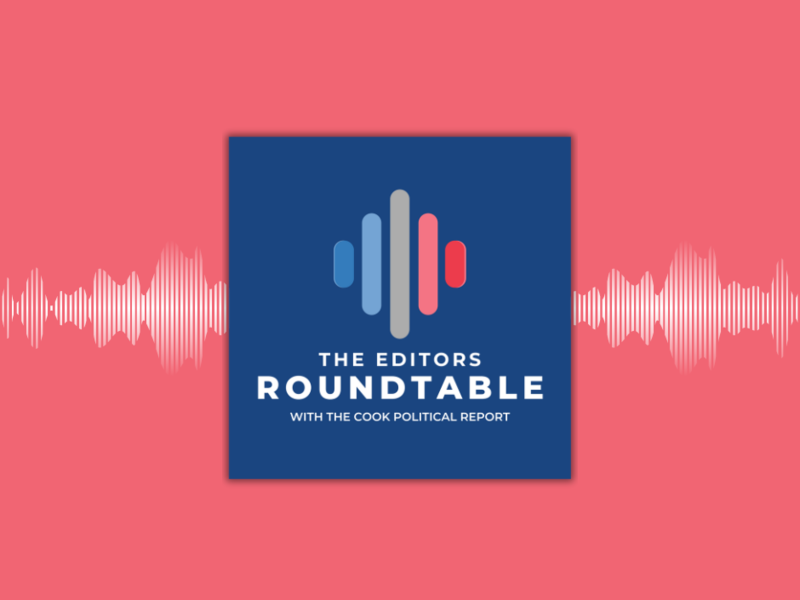
In politics, as in life, it's dangerous to try and fight the last war. Spending too much time looking backward and solving for yesterday's problems can lead to unexpected (and uncomfortable) consequences in the future.
One of the best examples is the push by GOP state legislators for more restrictive voting laws like voter ID requirements for absentee ballots, limits on the number and placement of absentee ballot drop boxes and voter roll purges. Spurred to action by former President Donald Trump's baseless allegations of fraud, 361 bills with restrictive provisions have been introduced in 47 states according to an early April report by the Brennan Center. A recent FiveThirtyEight analysis found that "at least 25 new restrictive voting laws have been enacted, with more potentially on the horizon."
On a very superficial level, it's easy to suggest that tightened rules around absentee voting would hurt Democrats. In Florida, where a new law requires voters to apply to vote by mail more frequently and restricts ballot drop boxes, 45 percent of all absentee ballots were cast by Democrats compared to just 31 percent cast by Republicans. In Georgia, where a new law requires voter ID to request an absentee ballot, 34 percent of Biden voters cast ballots by mail compared to just 18 percent of Republicans. And in Arizona, where a new law requires counties to remove voters from the permanent vote by mail list if they do not cast a ballot by mail for two consecutive election, 92 percent of Biden voters cast absentee ballots compared with 84 percent of Trump voters.
Yet, a new analysis of the 2020 electorate in three key Sun Belt states, North Carolina, Arizona and Florida, suggests that making voting by mail more difficult could actually end up hurting Republicans more than they realize.
Last September, KFF and the Cook Political Report teamed up to survey voters in three critical Sun Belt states — Florida, North Carolina, and Arizona. Nine months later, KFF analysts Ashley Kirzinger, Audrey Kearney and Mollyann Brody, went back to match the results from those surveys with actual voting records from Election Day to "better understand the demographics of voters who cast ballots during this election."
What they found was an electorate that — not surprisingly — included lots of new voters. "One quarter (26%) of the voters in the 2020 general election in Florida, North Carolina and Arizona were low propensity voters—voters who had been eligible in 2016 (at least 22 years old in 2020) but did not vote in 2016." The biggest increase of new voters came from Latinos and younger people (those aged 22-29 years old). For example, 35 percent of Latino voters and 43 percent of 22-29 year old voters in Arizona, Florida and North Carolina turned out to vote in 2020 but didn't vote in 2016. Overall, "about half (53%) of Hispanic voters voted in both the 2020 and 2016 election, compared to seven in ten Black (70%) and White (72%) 2020 voters."
Conventional wisdom has long held that a surge in Latino and younger voters would disproportionately help Democrats. Yet, KFF concluded that "neither party had an advantage with low propensity voters." According to the KFF analysis, 23 percent of Democrats and 21 percent of Republicans in Florida, North Carolina and Arizona voted in 2020 but not in 2016.
Moreover, KFF found that "a slightly larger share of new 2020 voters said they voted absentee (through the mail) with seven in ten (72%) low propensity voters taking advantage of absentee voting" compared to 67 percent of 2016/2020 voters.
Those low-propensity voters are also the most likely to sit out an election if they find that the process is too complicated or restrictive. Business Insider's Grace Panetta, one of the most astute reporters covering election law this last cycle, told me that "[H]aving to jump through extra hoops to apply for a mail ballot or get to a drop box may be no big deal to the already highly-engaged, regular voters, but it has the potential to most adversely affect lower-propensity-turnout voters who benefit most from the voting process being easy and accessible to navigate when they do turn out. Especially if voters already know one particular system, like being able to sign up for a mail ballot for two years, a state cutting off that path can erect barriers that at best, don't actually improve election integrity and at worst, dissuade someone from casting a ballot at all."
Given that many of these new voters were GOP voters, culling permanent absentee voter rolls and/or making it more challenging for a voter to cast a ballot absentee could end up depriving Republicans of some of the new participants to the electorate. Instead of rolling out a welcome mat to infrequent voters, Republicans may have put up a barrier.
While Trump encouraged GOPers to vote in person (alleging that vote by mail was fraudulent) KFF also found that Republicans "actual voting method did not exactly match their self-reported plans on voting method back in September." While just 23 percent of Republicans in Florida, Arizona and North Carolina told KFF pollsters that they planned to vote by mail, almost two-thirds of them (62 percent), ultimately cast a ballot absentee. In fact, every demographic group underestimated their ultimate voting behavior. About half of all Democrats said they'd vote absentee — in the end, that number was closer to 75 percent. Less than one-third of Black voters said they'd vote by mail — yet 67 percent ultimately did just that.
This suggests that while many Republicans may have told themselves and others that they would vote in person (perhaps as a way to signal support for Trump), they ultimately defaulted to the method that worked best for them. It makes little sense then for Republican legislators to make that method harder to use.
Finally, while this election was held in the middle of a once-in-a-generation pandemic, the decision to vote absentee didn't seem to be driven by health concerns. Just 20 percent of those who voted in Florida, North Carolina and Arizona told pollsters in September that they had significant worries about voting in person due to COVID.
Finally, absentee voting behavior has been inconsistent over these last few years, making it hard to predict what it will look like a year or four years from now. For example, Georgia Republicans passed no-excuse absentee mail voting in 2005. But, in 2016, just 4 percent of Trump voters and 5 percent of Hillary Clinton voters voted that way. In 2020, four times as many Trump voters cast a ballot by mail, and six times as many voters cast a ballot for the Democratic nominee via absentee ballot. In Florida, more Republicans voted absentee than Democrats in every election between 2014 and 2018. In 2020, Democrats outvoted Republicans via mail ballot by 14-points.
Politics has become as much about performance as anything else. And the decision by many GOP legislatures to tighten rules around absentee voting is, as Grace Panetta of Business Insider wrote, "as much about appeasing Trump and the base than about ensuring a political advantage in upcoming elections." And, given how many Republicans in key battleground Sun Belt states voted by mail, this looks more like the political equivalent of cutting off your nose to spite your face.









Subscribe Today
Our subscribers have first access to individual race pages for each House, Senate and Governors race, which will include race ratings (each race is rated on a seven-point scale) and a narrative analysis pertaining to that race.